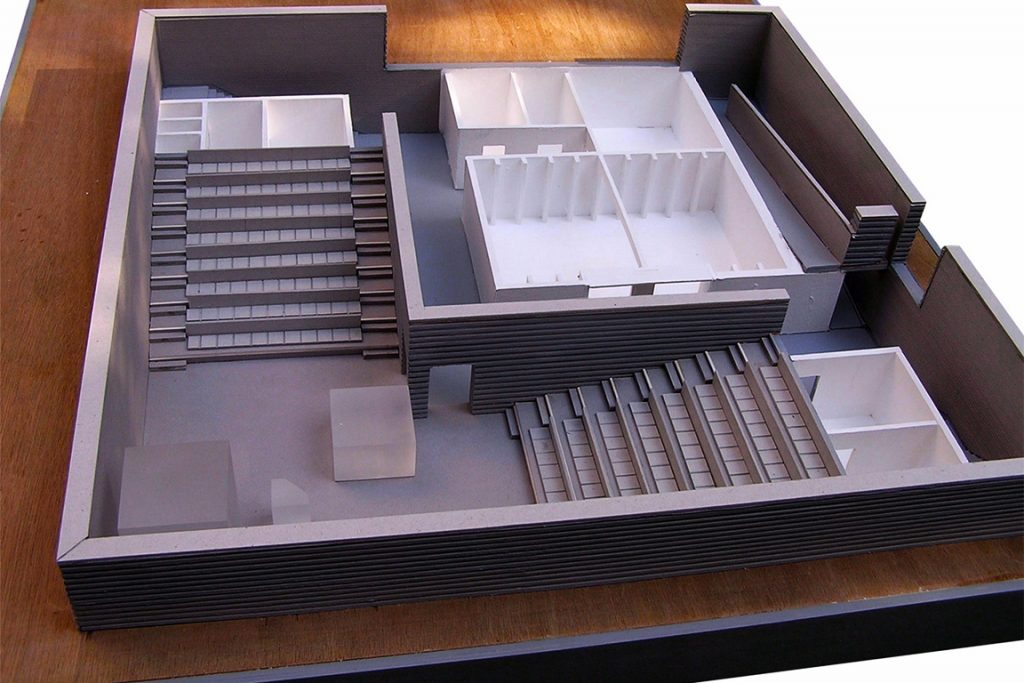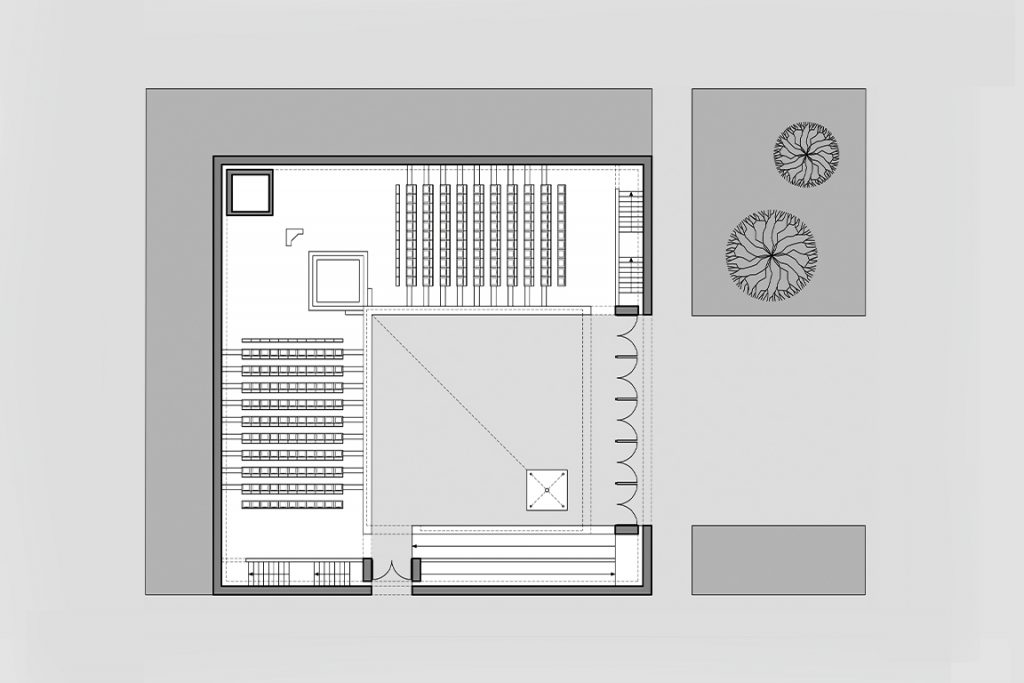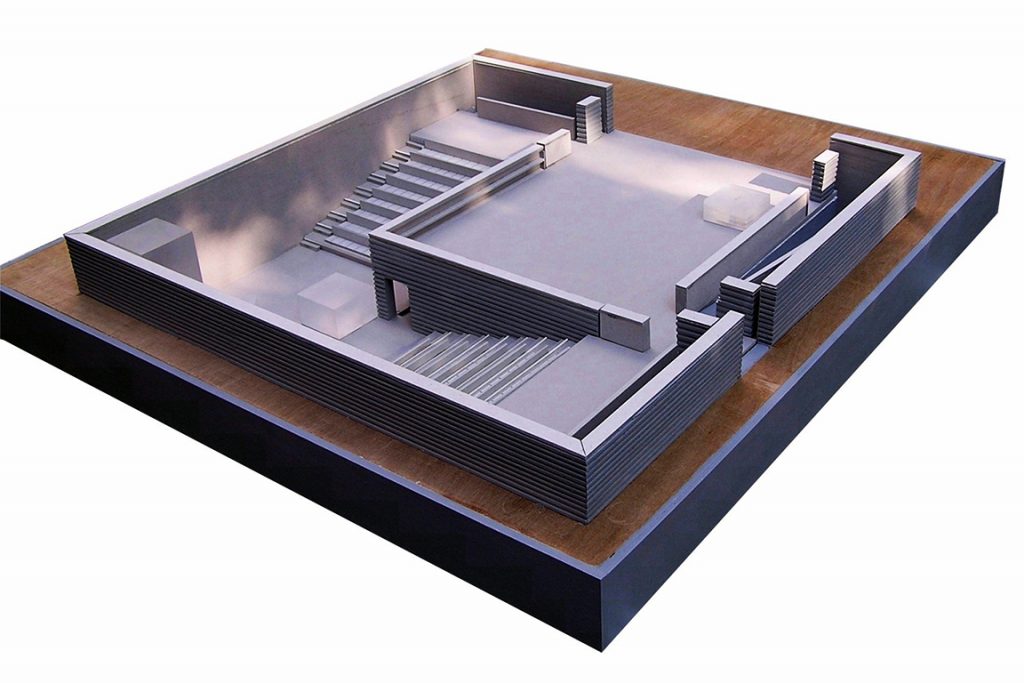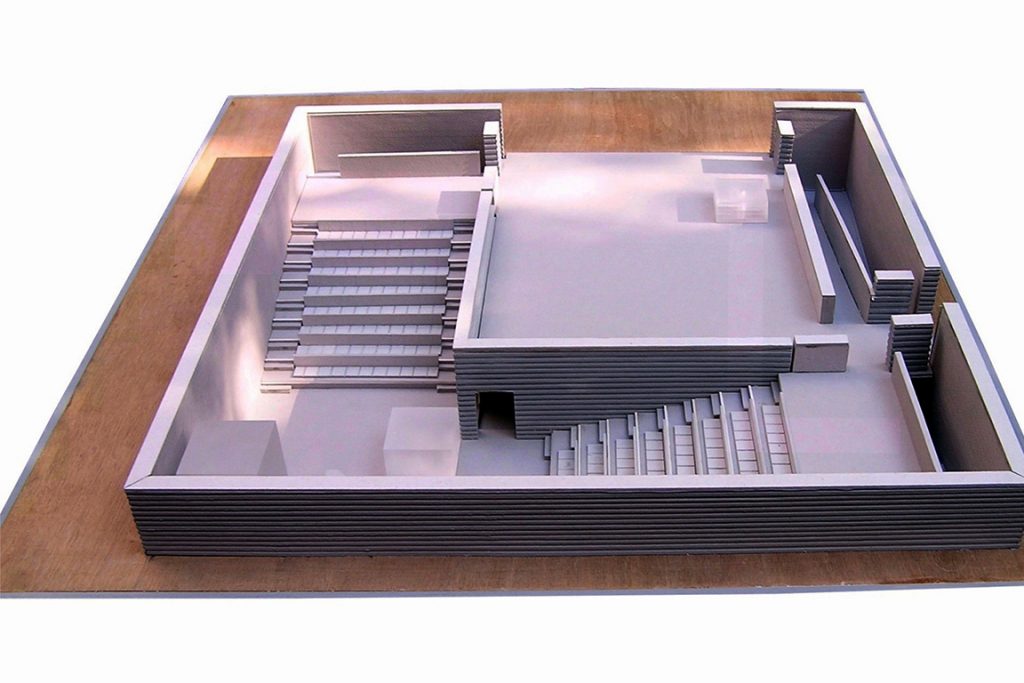Egalitarian Orthodox Synagogue
An Open Competition - Winning Entry
Project Area: 400 m2
The tension between the need for gender equality in the modern orthodox community and the demand of the halacha to separate between men and women, almost always focuses the debate on the mehitza itself. Liberal views naturally strive to diminish the importance the mehitza, to the point that it is preserved only symbolically, and one might argue, is almost redundant. More rigorous halachic approaches try to establish a friendly and “decent” mehitza, which often unintentionally becomes a cumbersome apparatus that attracts unnecessary attention during services.
In our proposal, we tried to offer another approach, which preserves the halachic demand for gender separation, but without a mehitza at all. The public space of the synagogue is totally egalitarian. It functions as a public hall with a library and a wash basin. This space is designed for the social functions of the synagogue including study and public kiddush. This space also functions as a backup space for high holidays with a temporary diagonal mehitza.
The prayer hall(s), however, are totally separate. Both are oriented symmetrically towards the bima and ark, while maintaining the strictest halachic demands for gender separation. This configuration also allows for an immediate transformation of the synagogue space to a traditional one.
The public hall of the synagogue is appropriately open to the street life and garden, while the prayer areas are articulated as introverted interior spaces, adequate for the self-reflective nature of the service. The prayer areas are washed gently with natural light on the perimeter walls, while the bima is accented with natural light to emphasize its centrality and its possible use for a huppa. The side doors near the bima provide functional exits and allow for the transformation of the bima into a central element for the entire community during the Torah service and for festivals such as Simchat Torah.
Our design approach is guided by the desire to emphasize the values of modesty and simplicity, representing the idea of a Mikdash Me’at, located in a typical Israeli urban landscape as a built object surrounded by greenery.





